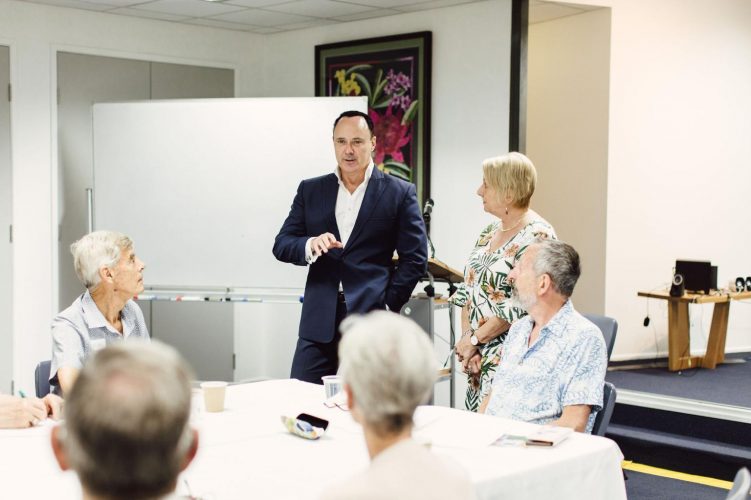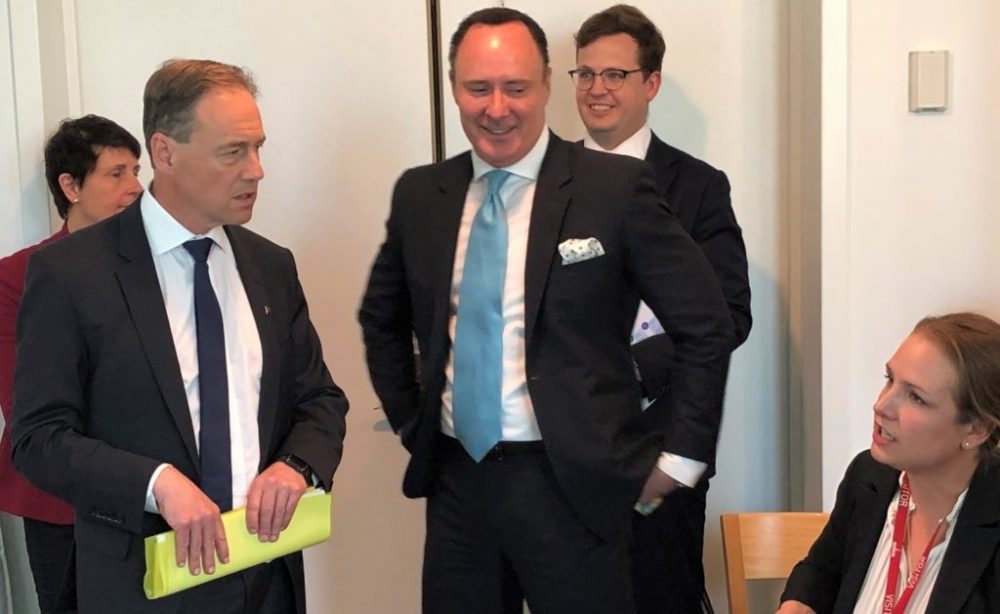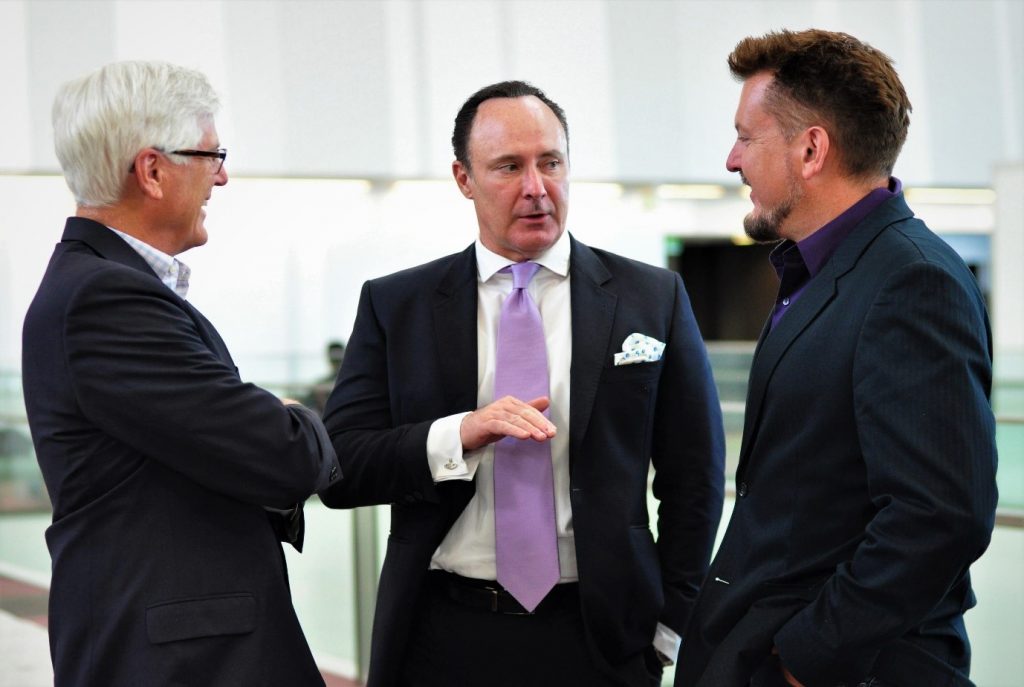
By Bill Petch, All.Can Australia Co-Chair
Receiving a cancer diagnosis can be one of the most stressful and unbalancing moments in a person’s life. The delivery of the news itself is enough to cause confusion and panic; but the diagnosis is merely the first step in what can be likened to a similar experience of Alice falling down the rabbit hole.
Imagine receiving a diagnosis and then having to try to untangle the knot of information and questions that come next. Do I need surgery? What are my treatment options? What specialists do I have to speak to? Where do I go for treatment? How do I manage work? Are there clinical trials I’m eligible for? Who do I speak to if I don’t understand what is being shared with me? The list of questions goes on.
So where do I start. These days it seems we more often than not turn to “Dr. Google”. Technological advances in other areas of our lives have created certain expectations around the immediacy of information, how we acquire it and what sources we trust. We are now used to necessary knowledge being a click away. However, healthcare is a complex system and as such the internet often raises more questions than it answers. The question is why? Why can’t we untangle the information knot for patients at a snap of a finger?
Of course, health technology is much more than an internet search, but it does raise the question of the power and the purpose of technology in healthcare. The democratisation of information has brought us many benefits (and challenges) and we have seen how this has disrupted many traditional sectors.
By any standard, we have a first class healthcare system but often our aspirations fall short, such as in the provision of equitable access. The complexity of the system means there are still areas of unmet need; be that in survival outcomes across cancers, outcomes for regional rural and indigenous communities, access to new therapies, new diagnostics, the rising cost of care to name but a few.
What we can learn from the impact of technology in other areas of our lives can guide us to ensure technology is not just a disruptor but also a reformer.
The last decade has seen the acceleration of partnerships globally not only with tech giants like Google and Apple, but also start-ups trying to harness the power of data to impact the delivery of healthcare.
The reason is not totally altruistic, we know healthcare is big business and is a growth area. We also know this is a data driven age. The collection and analysis of data is key to understanding unmet need and effectiveness, consequently, paving the way for innovation. Where data has had an impact in other commercial endeavours, the customer has more often than not been at the centre of the change. But in healthcare, is the patient at the centre of the health tech revolution and is the patent even considered the customer?
It’s fair to say the current state of interaction between health and technology in Australia is lagging. While we are starting to see some technological solutions used in healthcare, most of them are developed for clinicians, not the patient. Perhaps that is because the system sees the clinician as the customer?
If we look at functional efficiencies, all roads lead to a clinician. In other industries, efficiencies lead to increased profit, so is it not just a case of following suit? Efficiency is not always the key to effectiveness and the primary purpose of our healthcare system is to solve problems for patients. It seems in our technological transformation one key thing is missing. Is that the ultimate beneficiary?
Platforms, such as My Health Record, help to increase efficiency in a clinical setting; however, it delivers little obvious benefits to patients. They are developed with ‘efficiency’ as a primary goal and not focused on the patient needs, as they for example, navigate through the overwhelming steps of a cancer diagnosis. While efficiency is important for patients too, the need for someone to help them navigate the often confusing world of cancer care is much more prominent. They are ‘visitors’ and need specialists who would help them overcome barriers and show the way in unknown territory.

At the latest Ministerial Roundtable led by Cancer Australia, there was clear agreement on the need to embrace tech solutions in cancer care. While many identify navigation as an issue, we are still mainly starting to try and solve problems at the system level (such as trying to standardise data collection). That slows down and complicates our journey. Starting the journey with a patient as a beneficiary and solving their problems first will ultimately solve system issues as well (and actually open up new channels of data collection).
While it is great to see that patient-centric health services get attention at the national level, the existing nursing and navigator models target only a small number of more common cancers and don’t have the capacity to solve many problems patients are facing. By flipping the approach and putting patient first, we will gain their support as well as a powerful force advocating for change.
All.Can, a global initiative working to improve efficiencies in cancer care, conducted a patient survey to understand the needs of patients (across various tumour types) and pinpoint the gap in cancer services in Australia. The survey was our chance to figure out what is currently working in the Australian health system, compare how Australia is performing against other countries and to identify common issues that are negatively impacting patients.
What stood out was, half of the Australian respondents felt like they didn’t receive enough support to deal with the symptoms, with more than a third admitted they have been left out of a decision-making process.
Patients have long shared their feelings of disempowerment, and technology is a missing link that can help address the multitude of unmet needs. It can clear the path so we can deliver cancer services of direct value to patients.
There needs to be stronger connection between patients, clinicians and available services.
We need to move away from relying on traditional methods of connection. Initiating conversations with patients over the phone is outdated – and many patients don’t have the opportunity or would prefer not to travel to face-to-face appointments. Technology is the answer to create bespoke services that suit individual needs. It can also help predict demands for specific services and does not compromise the level of support people need following a cancer diagnosis.
I have a vision of what receiving a cancer diagnosis should be like. Technology plays a significant role in this vision as the key to helping patients better navigate the whole continuum, from diagnosis and beyond.
Rather than falling down a rabbit hole, imagine a scenario where you receive a diagnosis and you – and your loved ones – are sent tailored information about who you should be meeting with and when. You understand what appointments you will need to attend, and can actually manage this via your smart devices.
You are using this technology to keep track of your progress and all the various people along your journey – specialists, allied health professionals, counsellors and others. You have direct communication with a cancer care navigator who is across your needs and is engaged with you from the day of your diagnosis. You can also choose to have in-person consultations if needed. You have both technology and people resources at your fingertips to use when needed.
You can carry on with your life because the path ahead of you is a little clearer. You feel more supported and empowered, and know that whatever question you may have can be answered thanks to a better navigation system.
This scenario shouldn’t be a vision, but rather a reality for Australians regardless of the cancer they have been diagnosed with. The most important benefit technology can deliver for Australians is equitable access to cancer services. Research shows us, we will be able to improve survival rates if we improve consistency of access across the country.
Initiating discussions around patient-centric hybrid models – that is, the adoption of people power and tech resources – for health services is the first step in achieving this vision. All.Can was overwhelmed with the support received during Ministerial Roundtable in April 2021 for the need to invest and support better navigation in our health system.

We can achieve an easier-to-navigate cancer care model by consulting and involving patients and other stakeholders in every step of the design process. It is only by collaborating we will achieve a solution that will not only make sense in the real world, but will harness technology to the best of its ability for cancer care. It can improve survival and quality of life but also reduce costs over time.
At All.Can, we are determined to continue advocating for patients and make sure their perspectives are included, from design of the service delivery models to decision-making. We are aspiring to bring the patient-centric technological advancements to people living with cancer and some of the work we are already doing in this space will help us achieve that. From discussions with businesses working in health intelligence to planning a pilot of a new cancer care model, we are looking for the ways to make sure Australia is leading the charge towards truly personalised medicine.